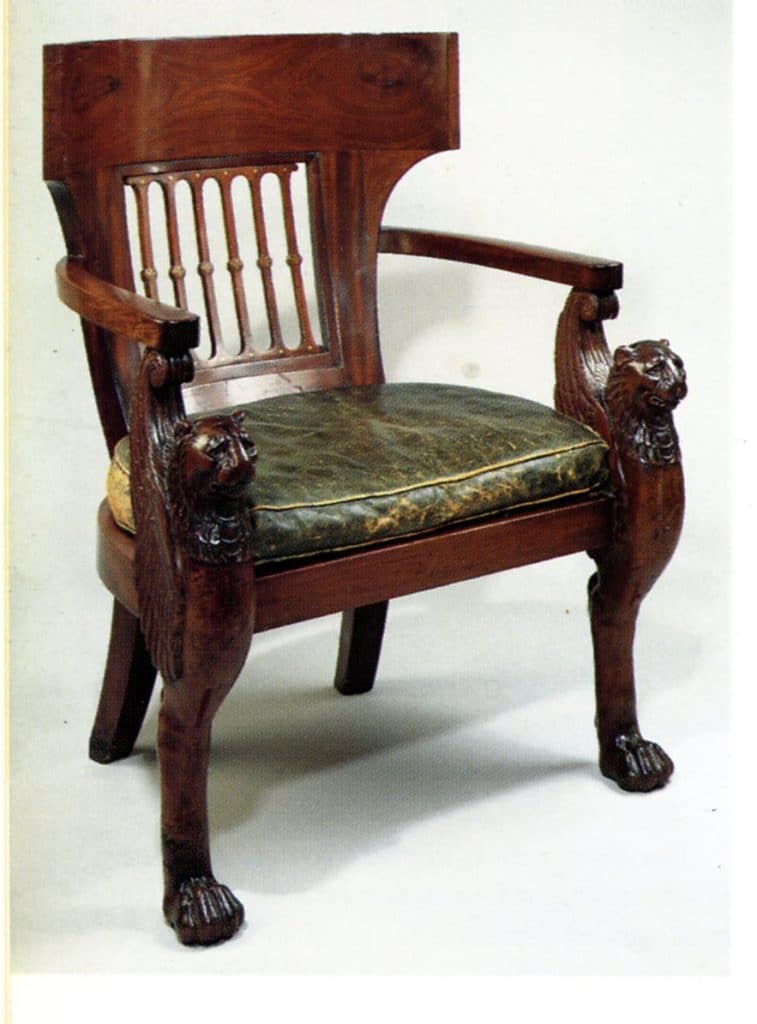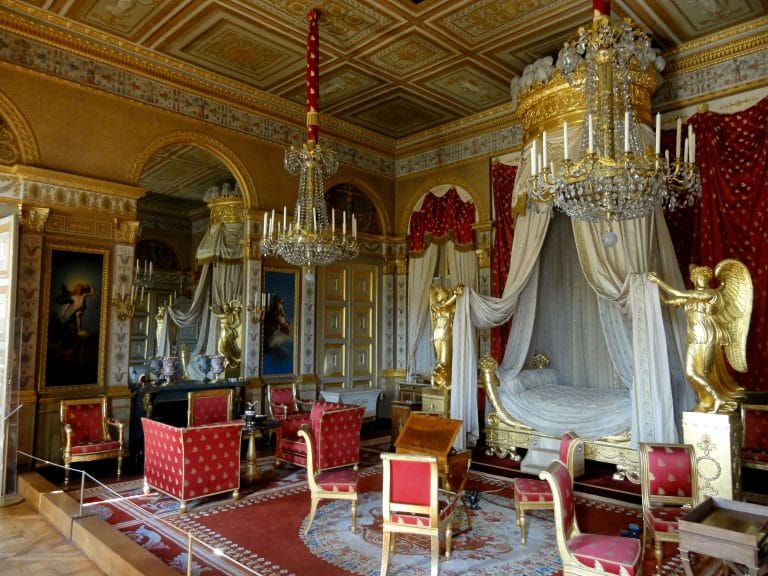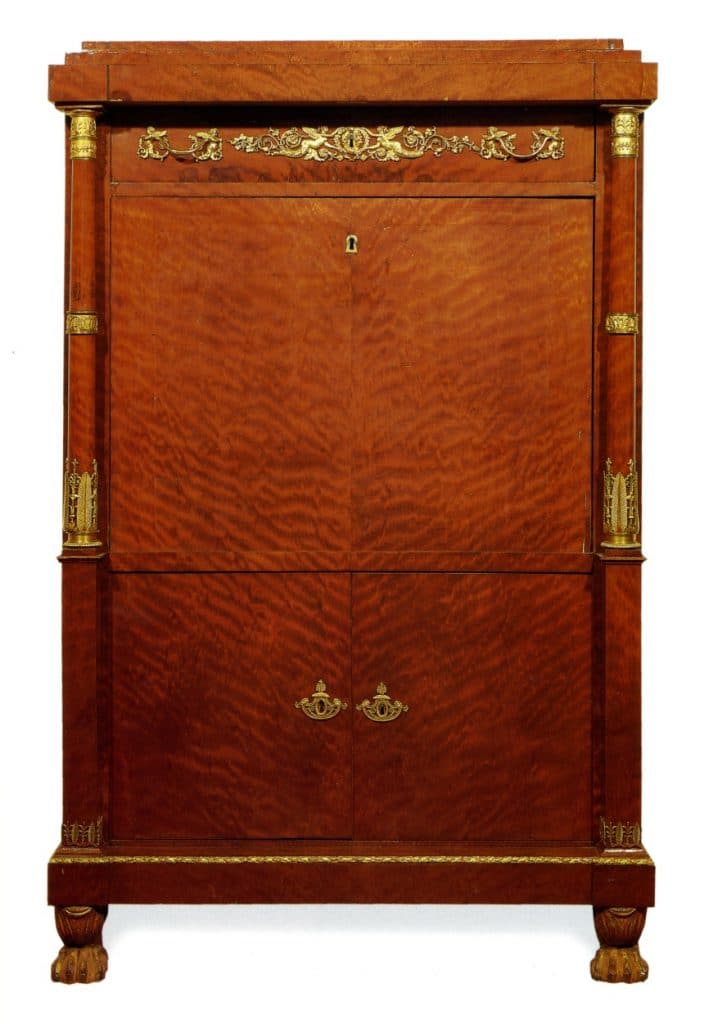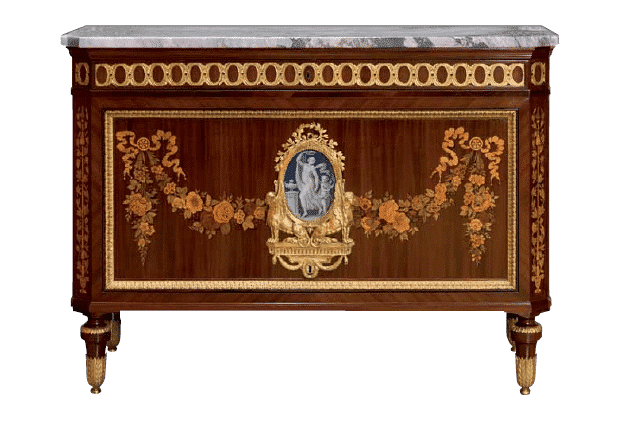Empire
The key event of the eighteenth century was the French Revolution, which completely changed society, culture and, therefore, also its artistic expressions. Starting from the early nineteenth century, the new taste of furnishings is characterized by the Empire style, a decorative typology adopted during the years in which Napoleon Bonaparte held the role of Emperor.
This style historically lasted from 1804 until 1814, that is until the Restoration, but in reality it began a little earlier and continued longer, not only that, it was also the subject of revival.
Before the Empire itself, there was the Directory, which owes its name to the form of government that ruled the fate of France from 1795 to 1799, the year in which Napoleon became First Consul. However, the furniture that reflects this style was not limited to these few years. In fact, they covered the time span between the Revolution and the Empire, including three brief regimes: the revolutionary government (1789-95) which includes the Convention (1792-95); the Directory (1975-99), the Consulate (1799-1804).
From a stylistic point of view, the Directory saw the continuation of the previous Louis XVI style, albeit with greater austerity and decorative cleanliness.
The reference model was, as for Neoclassicism, classical antiquity, as an era that was the bearer of those much coveted values of rationality and justice (see the article on Neoclassicism). The shapes of the furniture remained linear and geometric, but without blunt or rounded corners and with lighter and more slender proportions. The surfaces of the furniture are freed from inlays and excessive bronze decoration, mahogany becomes the preferred wood. All references to nobility are removed from the furniture, famous is the case of the Louis XVI desk which after its execution was modified by removing all references to the king, whether in bronze or inlay.

An example of this production were the furniture made by the Jacob family workshop, already active with Marie Antoinette since 1765, but which saw a real push under the Directory and the Consulate. In the 19th century the company benefited from the protection of the Emperor Bonaparte, for whom it produced most of the furniture for its residences.
They produced a chair created for the members of the Convention, comfortable and prestigious, which was a great success. The open back is very curved as in the Greek model called Klismos. The A-pillars are shaped like winged lions, meticulously carved in solid mahogany.
The style of the Directory was also influenced by the military campaigns promoted in those years. Fundamental was the Egyptian campaign of 1798, during which a commission was sent made up of archaeologists, scholars, architects and designers, charged with studying the civilization of the Nile and its culture. Numerous drawings of the Egyptian monuments were made, which were merged into the Description de l’Egypte, a series of volumes published in Paris starting from 1809.
The decorative motifs inspired by the rediscovery of the art of Egypt had an enormous diffusion, especially in the Empire period proper. In fact, the retour d’Egypte also had a political purpose, from the point of view of a culture celebrating the figure of the Emperor Napoleon and the victorious military campaigns in which he had participated.
Even classical antiquity has a clear reference to the famous countryside of Italy. The empire style looks at the great civilizations of the past, with a self-congratulatory purpose of Bonaparte himself.
In fact, he wants to present himself as a worthy heir of the great ancient empires, which he forcefully conquered and subjected to his control. Even art, which manifests itself in particular in the furnishings and decorations of the residences, must celebrate the Emperor and his politics.
In the Empire style starting from 1804 in fact, everything that can give resonance to this celebration of the figure of Bonaparte is used in the arts.
Thus the decorations of the walls, fabrics, tapestries or carpets, the bronze applications of the furniture, as well as the decorations of the ceramics or clocks are all symbols linked to his figure, such as the bee, the eagle – clearly drawn from the ‘Roman Empire-, the letter N, laurel wreaths, or related to his family, such as the swan, heraldic symbol of his wife Josephine, or even simple military symbols, such as Roman panoplies or fasces.
In the same years, therefore, furnishings are found that reside more of a taste linked to Greek-Roman antiquity and others that look more to the taste of ancient Egypt.

Napoleon somehow managed to export his style all over Europe, if not in the reproposed symbols, at least in the forms; for example almost everywhere with small differences the furniture became parallelepipeds with support plinths and columns on the uprights.
The Empire style was also adopted in Italy, especially in the states under French control. A more courtly bombast, a punctual re-proposal of the French Empire style, can be found only in the centers directly ruled by the members of the Bonaparte family. In fact, in Naples there was the reign of Giuseppe Bonaparte and then of Gioacchino and Carolina Murat, in Rome Paolina Borghese, and in Florence and Lucca the sister of the Emperor, Elisa Baciocchi. Not least Venice and Milan, in particular the latter, the seat of the imperial family. Despite being subjected to French control, in the Lombard-Venetian area constituting the Kingdom of Italy during the period in which Eugenio Beauharnais held the office of Viceroy, there was an adaptation to French taste, also known through the import of furniture and objects from Paris.

Compared to the French models, the Milanese furnishings therefore have a less sumptuous tone, since the celebratory reasons declaimed by the Parisian cabinetmakers are no longer there. The only exception is the setting up of the Royal Palace in Milan, where Napoleon was crowned King of Italy on May 26, 1805, set up with great pomp and where Giuseppe Maggiolini was also hired for the furnishings. It must be said, however, that not even the arrival of Napoleon was able to modify the taste for the inlay of the great cabinetmaker who created two splendid mahogany chest of drawers as requested with applications in gilded bronze, but personalized by festoons inlaid with a large variety of flowers made with an impeccable technique.





